-
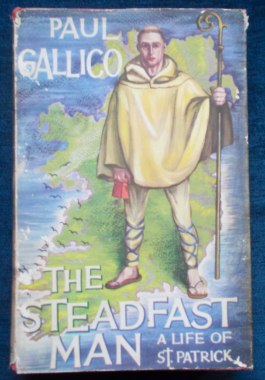 Magonius Sucatus Patricius was a wild, carefree undisciplined Romano-British boy living in south-west Britain toward the end of the fourth century. The legions had been recalled to Rome; Christianity, the official religion of the Empire was in the ascendancy and the Empire itself was breaking apart. When he was sixteen, Patricius visited his family's seaside estate and was carried off by Irish sea raiders to endure six years as a slave, shepherd and swineherd in the pagan wilderness of Northern Ireland . He escaped and after many adventures in France made his way home to Britain. Thirty years later - now a Bishop - Patricius again braved the hostile shores of Ireland to begin the most courageous conversion in the history of Christianity: that of a nation devoted to Celtic Gods and Druidism. Gallico presents the reader with St. Patrick with reason backed with evidence, without recourse to the more dramatic myths that surround him and weaving in excerpts from two extant sources: Confession and Letter to Coroticus to separate fact from legend. A balanced portrait of the extraordinary Saint.
Magonius Sucatus Patricius was a wild, carefree undisciplined Romano-British boy living in south-west Britain toward the end of the fourth century. The legions had been recalled to Rome; Christianity, the official religion of the Empire was in the ascendancy and the Empire itself was breaking apart. When he was sixteen, Patricius visited his family's seaside estate and was carried off by Irish sea raiders to endure six years as a slave, shepherd and swineherd in the pagan wilderness of Northern Ireland . He escaped and after many adventures in France made his way home to Britain. Thirty years later - now a Bishop - Patricius again braved the hostile shores of Ireland to begin the most courageous conversion in the history of Christianity: that of a nation devoted to Celtic Gods and Druidism. Gallico presents the reader with St. Patrick with reason backed with evidence, without recourse to the more dramatic myths that surround him and weaving in excerpts from two extant sources: Confession and Letter to Coroticus to separate fact from legend. A balanced portrait of the extraordinary Saint. -
 Here is an autobiographical tale that so captured the public imagination, as well as the spirit and feel of an age, that it went into 63 editions in less than ten years. The author describes how he built the house that became known as San Michele on the site of an old monastery on Capri before the beginning of the 1900s. He also includes stories of famous men he had known in Europe, stories of medicine and anecdotes about his friends.
Here is an autobiographical tale that so captured the public imagination, as well as the spirit and feel of an age, that it went into 63 editions in less than ten years. The author describes how he built the house that became known as San Michele on the site of an old monastery on Capri before the beginning of the 1900s. He also includes stories of famous men he had known in Europe, stories of medicine and anecdotes about his friends. -
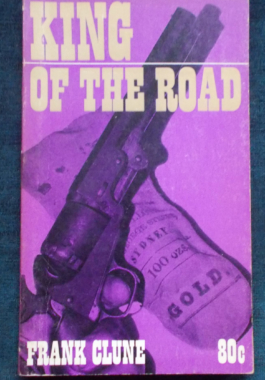 Frank Gardiner, one of Australia's most colourful bushrangers in Australia's gold-rush days, bailed up the Lachlan Gold Escort near Eugowra with a gang including Ben Hall, Dan Charters and Johnny Gilbert. This hold up is considered to be one of the largest ever gold robberies in Australian history. The robbery netted the gang an estimated £14,000 (approximately AUD $12.5 million in 2012 terms). Much of the gold was recovered by mounted police after they surprised the gang on Wheoga Hill near Forbes. What happened to the remaining gold is still the subject of much speculation and rumour. He fled to Queensland and enjoyed a year or two of liberty as the owner of a general store, until he was recognised and reported. His arrest occurred under controversial circumstance, and he was taken to Sydney to be sentenced to 32 years hard labour. He only served ten years, released under appeal on the proviso that he left the country. He travelled to San Francisco, and rumours of his life there are many, varied and rich with story-telling. Previously published as Dark Outlaw and Gunman Gardiner.
Frank Gardiner, one of Australia's most colourful bushrangers in Australia's gold-rush days, bailed up the Lachlan Gold Escort near Eugowra with a gang including Ben Hall, Dan Charters and Johnny Gilbert. This hold up is considered to be one of the largest ever gold robberies in Australian history. The robbery netted the gang an estimated £14,000 (approximately AUD $12.5 million in 2012 terms). Much of the gold was recovered by mounted police after they surprised the gang on Wheoga Hill near Forbes. What happened to the remaining gold is still the subject of much speculation and rumour. He fled to Queensland and enjoyed a year or two of liberty as the owner of a general store, until he was recognised and reported. His arrest occurred under controversial circumstance, and he was taken to Sydney to be sentenced to 32 years hard labour. He only served ten years, released under appeal on the proviso that he left the country. He travelled to San Francisco, and rumours of his life there are many, varied and rich with story-telling. Previously published as Dark Outlaw and Gunman Gardiner. -
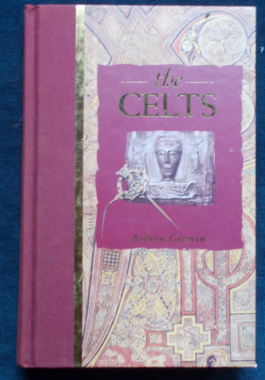
The Celts: Aedeen Cremin
$12.00A fascinating insight into the daily lives of the Celts - their beliefs, their creations, their flamboyancy, their love of nature, beauty, poetry and the family. Fabulous colour photographs and reproductions of Celtic art and illuminated manuscripts. -
 Princess Elizabeth of York was crowned Queen on June 2, 1953 and the world watched as she dedicated herself to her country. Drawing on his own experience with the Royal family, together with meticulous research and rare archive material, Titchmarsh tells the story of a young woman thrust into the limelight and how sixty glorious years have revealed her dignity, wisdom and unrivalled devotion to her people. With black and white and colour photographs.
Princess Elizabeth of York was crowned Queen on June 2, 1953 and the world watched as she dedicated herself to her country. Drawing on his own experience with the Royal family, together with meticulous research and rare archive material, Titchmarsh tells the story of a young woman thrust into the limelight and how sixty glorious years have revealed her dignity, wisdom and unrivalled devotion to her people. With black and white and colour photographs. -
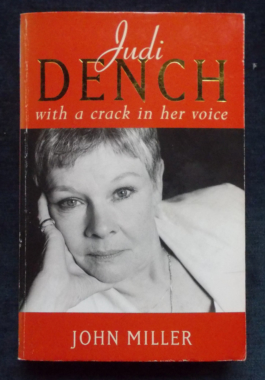 Judi has long been a favourite of the English stage and screen, From her professional debut as Ophelia at the Old Vic to the role of Queen Victoria and Ian Fleming's 'M', John Miller examines her life through her own words and diaries, and through those of her contemporaries and critics. He gives the reader a picture of a private woman, admired and loved by her peers for her wicked sense of humour, consummate professionalism and tremendous talent. Illustrated with black and white photographs.
Judi has long been a favourite of the English stage and screen, From her professional debut as Ophelia at the Old Vic to the role of Queen Victoria and Ian Fleming's 'M', John Miller examines her life through her own words and diaries, and through those of her contemporaries and critics. He gives the reader a picture of a private woman, admired and loved by her peers for her wicked sense of humour, consummate professionalism and tremendous talent. Illustrated with black and white photographs. -

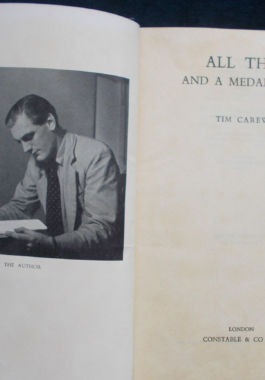 Carew - real name John Mohun Carew - attended Marlborough College in 1934-38 and then joined the British forces in 1939, serving with the Gurkha Rifles in India, Burma, Malaya and Indonesia, and with the Devon Regiment in Hong Kong and Malaya. He was awarded the Military Cross and Burma Star. This is the story of ten years of Carew's life - fighting, savage years, dicing with death - and winning. It is also his first of many books on warfare in history.
Carew - real name John Mohun Carew - attended Marlborough College in 1934-38 and then joined the British forces in 1939, serving with the Gurkha Rifles in India, Burma, Malaya and Indonesia, and with the Devon Regiment in Hong Kong and Malaya. He was awarded the Military Cross and Burma Star. This is the story of ten years of Carew's life - fighting, savage years, dicing with death - and winning. It is also his first of many books on warfare in history. -

The twentieth century has seen a marked rise in the number of religious cuts and sects throughout the world. Until recently, such groups were viewed as harmless, misguided zealots. However, doubts are being raised about the nature of some cults with the massive media coverage of the mass suicides at Jonestown and David Koresh’s Branch Davidian Cult in Waco. Here are the prophecies and practices of these controversial sects. From the early rituals of Ancient Egypt, Rome and Greece to the headline grabbing activists of the Ninteies. There are leader profiles and the influences that shaped their individual philosophies.



